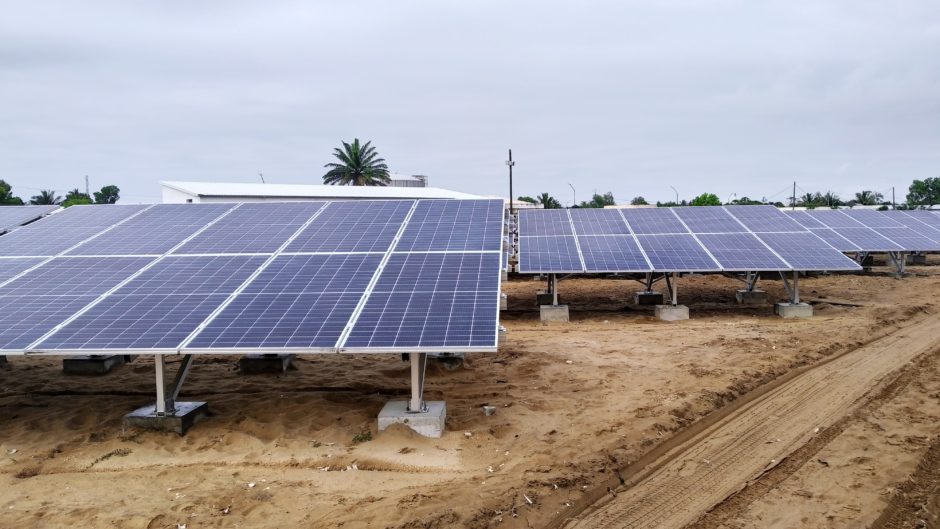
In Africa there is an unacceptable gap between electricity supply and demand, where 600 million people still lack access to reliable energy.
Future economic growth and a booming population will only increase the continent’s energy demands. Africa is growing by an average of 2.7% every year. It is expected the population will double by 2050, reaching 2.5 billion people.
Reliable energy is essential if Africa is to stimulate industrial growth, boost wealth and create local jobs, both directly and indirectly.
Planned renewable energy projects are barely keeping pace with Africa’s birth rate. I am not the first, and I won’t be the last to stress the importance of increasing Africa’s share of renewable energies.
Renewable energy sources have the potential to play a leading role in meeting the continent’s energy demands. Renewables are more energy-efficient, predictable, and cost-effective in the long term. They offer a cleaner alternative to fossil fuels by reducing carbon emissions, thus meeting climate goals and improving our health.
Time for change
The message “we need more renewable energy in Africa” has been repeated globally ad nauseum – even taken for granted. Tangible solutions are thin on the ground. In my view, to bridge the energy gap, what we really need is more innovation in Africa’s renewable energy sector.
Why? Africa is a large continent: home to various climates, environmental conditions, population densities and, therefore, energy demands. We cannot rely on a single renewable solution. Nor should we, when we consider that we have all the requirements to hand in abundance. There is sunlight, rivers, wind, geo-thermal and even tidal resources.
Renewables are not without their challenges, including expensive initial upfront costs and energy storage issues. But I believe innovative solutions can address these problems and speed up Africa’s progress towards a renewable future.
The private sector, investors and governments must now collaborate to develop state-of-the-art projects and technologies that will meet appropriate local energy demands. Simultaneously, we can also make renewables more reliable, sustainable and affordable in the long term.
In fact, the business models are becoming more robust: with falling technology costs and greater efficiencies, especially in new solar panel technology and larger wind turbines, we are already seeing progress. In 2019, over three-quarters of energy projects in Africa were renewable.
Community needs
At Groupe Filatex, a leading renewable energy provider in Madagascar, we are constantly striving to develop innovative renewable projects to meet the energy demands of communities across Madagascar and Africa – and not just urban communities.
We are passionate about bringing development to the rural towns and villages. In Madagascar only 15% of the population currently has access to energy, and this falls to 5% in rural areas. Our solar mini grid solutions are answering energy access issues in rural Madagascar too, providing electricity locally, where communities are not connected to the national grid.
Another innovative project we are piloting is a fully mobile and portable solar unit in Madagascar’s Tulear province – 200 pre-assembled and pre-wired photovoltaic panels that effectively “plug & play” in good weather (deployed in a record time of 30 minutes).
We are also leveraging our Industrial Free Zones to extend solar energy capacity in Madagascar. We are installing photovoltaic panels on the rooftops of our warehouses.
The scale of this solar project is unique. With a 150,000 square metre surface area, this is the biggest solar rooftop project in Africa – making the most of Madagascar’s 2,800 hours per year of sunlight.
Co-operation
But we are not the only ones to be developing sustainable innovative renewable projects across Africa. It will be interesting to see how future trade deals might affect innovation in the renewables sector. Among the various setbacks caused by COVID-19 is a delay in the implementation of the African Continental Free Trade Agreement (AfCFTA). This is now postponed until early 2021.
By eliminating all tariffs, AfCFTA should one day make inter-connectivity of grids more achievable and create a bigger supply and demand dynamic.
Renewable energy is a relatively new commodity. It was once the future, a thing of dreams, but today it is a reality. To drive our ambitions further we need new thinking.
The days of state planning and ownership of key infrastructure are fast coming to an end. Public private partnerships are now the norm. It is the only way we can supply sufficient electricity for the future.
Our customers are no longer politicians or bureaucrats. They are the smartphone-touting youth, sitting in air-conditioned offices or the farmer pumping water to his crops. They are the people of Africa.
Recommended for you
